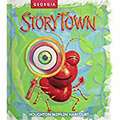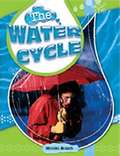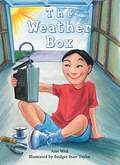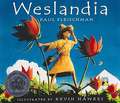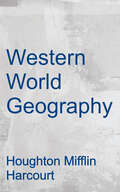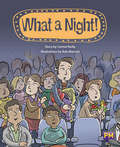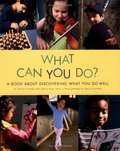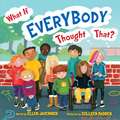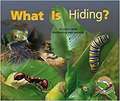- Table View
- List View
More NIMAC books are available at www.nimac.us. If you find your title in the NIMAC and not in Bookshare then please contact us to request it.
Volcanoes: Exploding Mountains (Into Reading, Benchmark 3-6, Level V #13)
by Terry Jennings Vicki JacobsonNIMAC-sourced textbook
Vr-oo-m! (Into Reading, Level N #75)
by Diana Noonan Wayne BryantNIMAC-sourced textbook <p><p> Miss Griffin is a mystery! Each day, the roar from the engine of her little red car wakes everyone in Eliza’s street. Then, just when everyone has decided they have had enough of Miss Griffin’s noise, they see a big news van outside her house.
Watching Turtles (Into Reading, Level A #1)
by Lesley Fields Bradley Clark Cynthia ClarkNIMAC-sourced textbook
Waves & Their Applications, Module L (HMH Science Dimensions)
by Marjorie Frank Michael Heithaus Michael DiSpezioNIMAC-sourced textbook
The Weather Box (Rigby Leveled Library, Level Q #83)
by Ann Weil Bridget TaylorNIMAC-sourced textbook
Welcome Home, Bear: A Book of Animal Habitats (Into Reading Texas, Read Aloud Module 9 #2)
by Il NaNIMAC-sourced textbook
Weslandia (Into Reading, Trade Book #1)
by Paul Fleischman Kevin HawkesNIMAC-sourced textbook <P><P>School is over and Wesley needs a summer project. Having learned that every civilization has a staple food crop, he decides to plant a garden and start his own — civilization, that is. He turns over a plot of earth in his yard, and plants begin to grow. Soon they tower above him and bear a curious-looking fruit. As Wesley experiments, he discovers that the plant will provide food, clothing, shelter, and even recreation. It isn't long before neighbors and classmates have developed more than an idle curiosity about Wesley and exactly how he is spending his summer vacation. Enter the witty, intriguing world of Weslandia.
Weslandia (¡Arriba la Lectura!, Trade Book #1)
by Paul Fleischman Kevin HawkesNIMAC-sourced textbook
Western World Geography: Guided Reading Workbook (World Geography: Western World Series)
by Houghton Mifflin HarcourtNIMAC-sourced textbook
We've Got Mail!: Sending Mail in the United States from Past to Present (Into Reading, Level P #41)
by Catherine Hinkson Beth BeggsNIMAC-sourced textbook <p><p> Have you ever wondered how people sent messages long ago? Can you imagine having to wait months or even years to hear from your family and friends? This book describes how the post office system in the United States has changed.
What a Night! (Into Reading, Level N #77)
by Carmel Reilly Rob ManciniNIMAC-sourced textbook <p><p> Kayla, Joe and Dad are on their way to the Grand Theatre in the city. They are so excited to see Mum perform in a musical! But then something terrible happens – the car won’t start! How will they get to the theatre now?
What Can You Do?: A Book About Discovering What You Do Well (Into Reading, Read Aloud Module 10)
by Shelley Rotner Sheila KellyNIMAC-sourced textbook <P><P>What Can You Do? is a book to help children discover their own special talents. Inspired by Dr. Howard Gardner's Frames of Mind, in which he outlines seven different kinds of intelligence, the book helps children realize that succes comes in many forms. While one child might excel in mathematics, another might shine as an actor or a painter. The top reader in the class may not be a good skier, and vice versa. The authors hope to offer children and the adults who care for them a chance to think and talk about ways children have met with success or difficulty in using their abilities, and to help them recognize that one ability is not better than another. This understanding will encourage children to seek help with their challenges and to delight in their strengths.
What If Everybody Did That? (Into Reading, Trade Book #7)
by Ellen Javernick Colleen MaddenNIMAC-sourced textbook <P><P>What if everybody were more thoughtful before they judged someone? If you see someone in a wheelchair, you might think he or she couldn’t compete in a race. But…you might be wrong. What if you see a child with no hair? Do you think she is embarrassed all the time? How about a kid who has a really hard time reading? Do you think that means he’s not smart? You might think so. But…you might be wrong. <P><P>With clear prose and lighthearted artwork, this companion book to the bestseller What If Everybody Did That? explores the preconceived notions we have about the world and encourages kids to be more thoughtful.
What Is Hiding? (Into Reading, Level J #10)
by Cheryl Jakab Luke JureviciusNIMAC-sourced textbook <p><p> 'What is Hiding?' shows a river bank with insects and small animals hiding. Can you find them?
What Is Soil? (Into Reading, Level K #90)
by Phillip SimpsonSoil is very important. We use it to grow plants and food. Find out about the different types of soil, how soil is formed, and what soil is used for.

